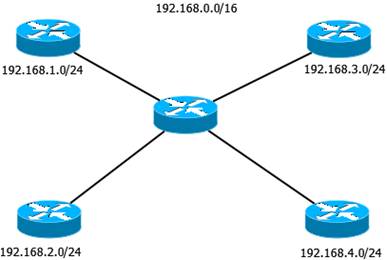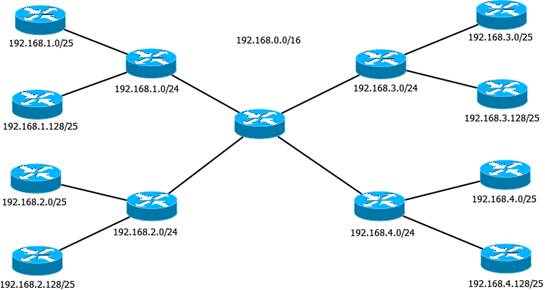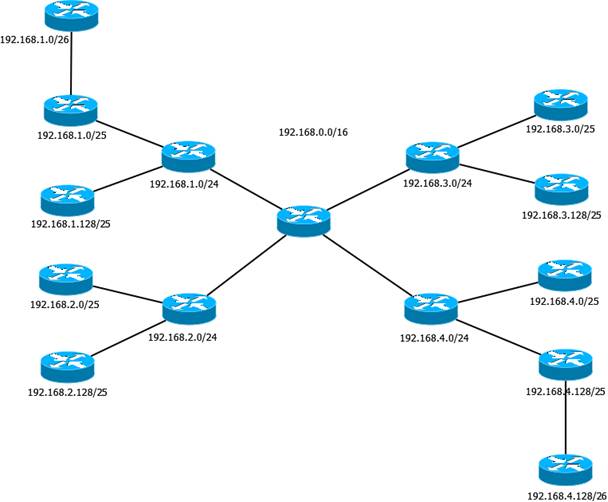VLSM allows you to use more than one subnet mask within the same network address space. You can use VLSM to recursively division the address space so that it can be reassembled and aggregated to reduce the amount of routing information at the top level. With VLSM, a network is first divided in subnets, some of the subnets are further divided in sub-subnets, and so on. This allows the detailed structure of routing information for one subnet group to be hidden from routers in another subnet group.
To better understand, we will make this topic an example-based one.
To better understand, we will make this topic an example-based one.

Here, we have the 192.168.0.0/16 network subnetted in 4 smaller networks, 192.168.1.0/24, 192.168.2.0/24, 192.168.3.0/24 and 192.168.4.0/24. You have learned to subnet from the Subnetting lesson. Now it’s time to go deeper with subnetting and try to sub-subnet.
At the top level of the network, 192.168.0.0/16, the network address used is 192.168.0.0 and the broadcast address is 192.168.255.255. As you divide the address space, the next router, let’s pick the router handling the 192.168.1.0/24 network, will use 192.168.1.0 as the network address and 192.168.1.255 as the broadcast address. If we divide our network even more, let’s say we will divide 192.168.1.0/24 in 192.168.1.0/25 and 192.168.1.128/25, the router handling the 192.168.1.128/25 network for example, will use 192.168.1.128 for the network address and 192.168.1.255 as the broadcast address.

Now you can see what VLSM means. First, we have subnetted the IP address space in 4 separate networks. After that, we have added another level of subnetting by dividing every /24 block in two /25 blocks. We can go even deeper by subnetting the sub-subnet.

We have added the 192.168.1.0/26 and the 192.168.4.128/26 subnet. The level of subnetting can go as deeper as you want until you reach the /30 prefix, which accommodates only two hosts.
VLSM does not have typical scenarios in real life. Depending on how you want to design your network and how the network is supposed to work, you may or may not want to use VLSM.
However, understanding VLSM and subnetting concepts is an important topic in your preparation for the CCNA exam. We make our best to help you easily understand all the topics required for passing Cisco’s CCNA exam. We also recommend you to spend more time just to make sure you really understand subnetting and VLSM. When you take the CCNA exam, you must also be able to subnet in mind, without using calculators. You can also do this with a pen and paper, but for saving time (because you won’t have too much when you’ll take the exam), it’s better to try to memorize and be able to do the math in your mind.
